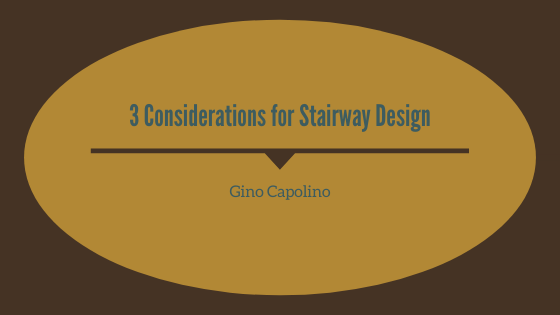Stairways aren’t just about getting from one floor of your home to another. They can also play a vital role in the look and feel of your home. Stairway designs range from traditional to contemporary to industrial and everything in between. So while they do have a functional purpose within the home, they also can provide a unique aesthetic.
Flooring Considerations
Depending on your budget for your stairway project, the amount of maintenance required for upkeep, and your decor preferences, there are many style options when it comes to flooring.
Hardwood Flooring
Hardwood flooring is a classic choice for many homeowners. Hardwood can accommodate a wide range of stylistic appeals – everything from natural and rustic to eclectic and elegant. It is also relatively low maintenance.
Carpeting
Whether you choose full carpeting or carpet runners, this flooring can create a warm and cozy feel while helping to reduce noise from people going up and down the stairs. It may also provide a bit of cushion if someone falls. Full carpeting is nice when the base stair flooring begins to show signs of wear and aging, but you don’t want a complete remodel. Carpet runners leave stair edges visible to provide warmth while not entirely covering up the underlying stairway’s beauty. These are a bit easier and cheaper to install than full carpeting.
Tile
While not as common, tile can really dress up a stairway. The tiles are usually affixed to the risers and not the tread of the stairs. Vividly patterned tiles can give the stairway a bold pop to already beautiful hardwood stairs.
Painting
For those who don’t want to use carpeting but don’t want to leave the stairs plain, painting may be an option. Some homeowners create a runner illusion by painting the stairs to look as though there is a carpet runner on them, while others go for a more artistic look – perhaps painting nature designs or other creative scenes on them.
Railing Considerations
The primary function of stair railings is to provide safety, but that doesn’t mean they can’t offer a splash of style and appeal to the overall stairway. As with flooring, there are many options available. Railing usually consists of balusters or spindles, a handrail, newels, and in some cases, a bottom rail. The spindles are the columns or rods that connect the top railing or handrail to the bottom rail. These may be made of wood, metal, glass, or any other practical material. Newels are found at the stairway’s start and end and may be thick distinctive pillars with ornate decoration or can be plain and non-distinct from the other supporting posts of the stairway.
Lighting Considerations
The lighting component of a stairway can also serve both functional and aesthetic purposes. Functionally, lighting provides safety for those traversing the stairway as dark stairs are a safety hazard. Lighting may consist of a traditional overhead light, wall sconces, recessed lights along the wall or ceiling of the stairway, or even LED strips under the tread in the case of certain stairway designs.

